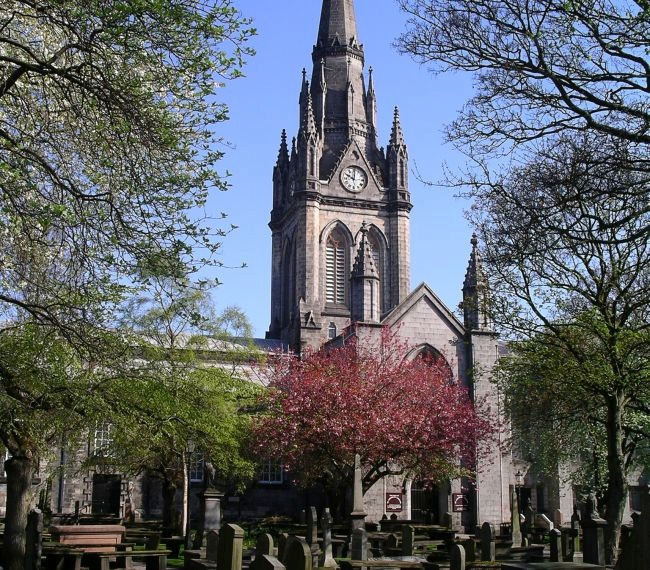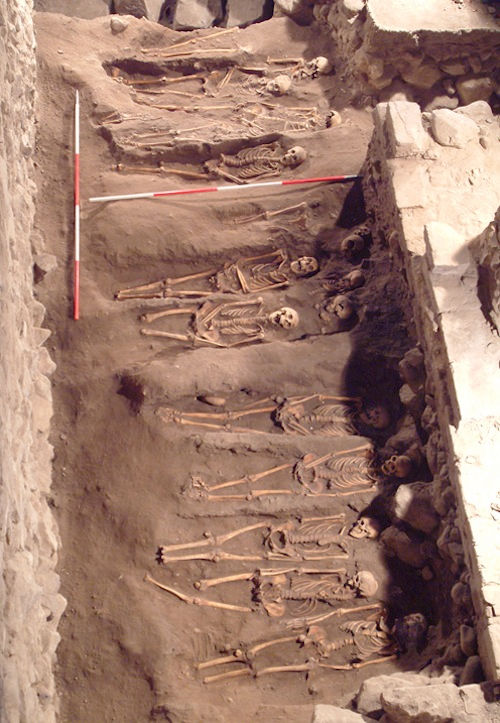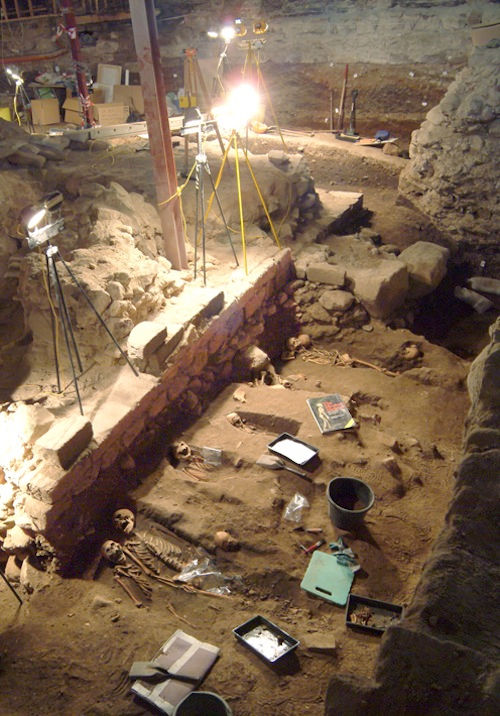Located in Aberdeen, Scotland is a small 15th century church. This church may look harmless, however, it contains the secrets to one of the darkest times in the city’s history. In 1597, twenty three women were put on trial and executed during Aberdeen’s “Great Witch Hunt.” This seemingly peaceful church was actually a prison for these “witches” during Aberdeen’s notorious witch hunt. Two separate places had been built as a prison within the church. The first being a stone vaulted chapel and the other being the steeple.

Photo: Live Science
Despite popular belief, in 16th century Scotland, witch hunting was not done by an angry mob. Citizens were actually commissioned by the order of the King. Because of these royal commissions, Aberdeen has meticulous records of their witch trials. These records include payments to the black smith for installing the iron rings that were used to imprison the accused. The city’s records also include a detailed cost of materials that were used to tar and burn the accused women.
What Was the Great Witch Hunt?
The Great Witch Hunt of 1597 is considered phase one of a series of trials throughout Scotland. These hunts were started by the witchcraft laws which were put in place by King James VI. Witchcraft persecutions started to sweep through Europe in the 15th century. However, it didn’t reach the America’s until the 17th century, which we now know as the Salem Witch Trials of 1692 to 1693.
During the 15th century many Catholic and Protestants were united with one common belief, that “witches commune with the devil.” The most famous incident in Aberdeen actually took place in 1597. Jane Wishart, a mother, was convicted on 18 counts of witchcraft. She was accused because her fellow citizens believed that she was casting spells on her neighbors. One in particular, was when Wishart supposedly cast a spell on her son-in-law after a heated argument. Citizens reported that Wishart had cast a spell that forced a mysterious dog to attack her son-in-law. Other rumors have claimed that Wishart dismembered a corpse in order to retrieve the ingredients she would need to cast other spells.
Wishart’s son was later convicted by the townspeople of Aberdeen. Many believed that he was the head of a coven of witches and even danced with the devil. The Wishart’s were strangled to death and then burned. The city records state that it cost “3 pounds, 13 shillings, and 4 pence,” in order to pay for all of the materials needed to execute the Wishart’s.
Many historians believe that Aberdeen buried more witches than any other city. Chris Croly comments that this belief, “may not be entirely accurate, but what is absolutely accurate is that Aberdeen has the best civic records of witch burning.”
The Secrets Buried Beneath the Church
The East Kirk of St. Nichols began its restoration in 2006. Before the church could be fully restored, it underwent an archaeological excavation. At the time, no human remains were found. The first phase of this excavation did however, give archaeologists great insight into the lives of Aberdeen’s townspeople from the 11th to the 18th century.

Photo: Live Science
As the excavation continued, Croly and his team uncovered more than 2,000 human remains underneath the floor of the East Kirk. Around 1,000 of those remains were entire skeletons. None of the accused “witches” remains were found on site. Croly states that the accused would have been buried somewhere else near or on “unhallowed ground.”

Photo: Live Science
Experts believe that most of these bodies were buried before 1560. After 1560, the Protestant Reformation forbade any burials within the church. These bodies weren’t the only interesting thing the archaeologists found. The excavation also revealed evidence of a separate church existing beneath the Kirk. This Kirk dates back to the 11th century. Archaeologists also uncovered nine babies that had been buried together to form an arc. These bodies were found near the 11th century wall and experts believe they might have suffered from a disease that had become an epidemic.
What Now?
Since the excavation, the bodies will be placed back into a vault beneath the churches current floor. The ceremony will be held later on this year. In addition to this, the chapel will be redeveloped into a place of peace.

